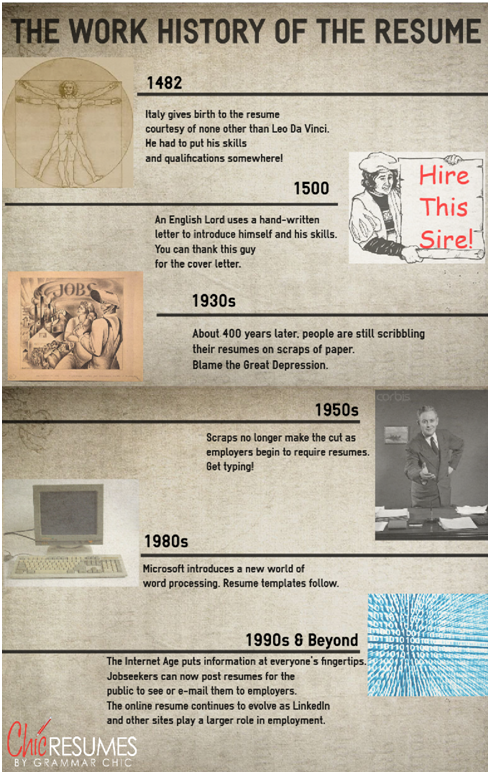The word résumé comes from the French word résumé meaning “summary”. Leonardo da Vinci is credited with the first résumé, though his “résumé” takes the form of a letter written about 1481–1482 to a potential employer, Ludovico Sforza. For the next 450 years, the résumé continued to be a mere description of a person and included their abilities and past employment. In the early 1900s, résumés listed things like weight, height, marital status and religion. It was not until 1950 that the résumé evolved into something more than words written on scraps of paper. By then, résumés were considered very much mandatory, and started to include information like personal interests and hobbies. It was not until the 1970s, the beginning of the Digital Age, that résumés took on a more professional look in terms of presentation and content.

Thus, a résumé or resume is a document used and created by a person to present their background, skills, and accomplishments for a variety of reasons, but most often they are used to secure new employment.
A typical résumé contains a “summary” of relevant job experience and education. The résumé is usually one of the first items, along with a cover letter and sometimes an application for employment, which a potential employer sees regarding the job seeker and is typically used to screen applicants, often followed by an interview.
Resume vs CV
The curriculum vitae (CV) used for employment purposes in the UK (and in other European countries) is more akin to the résumé—a shorter, summary version of one’s education and experience—than to the longer and more detailed CV that is expected in U.S. academic circles.
In South Asian countries such as India, Pakistan, and Bangladesh, biodata is often used in place of a résumé.


[…] It is usually one to two pages long and focuses on relevant work experience and accomplishments. Resumes are commonly used in the United States and Canada and are preferred for most job applications, […]